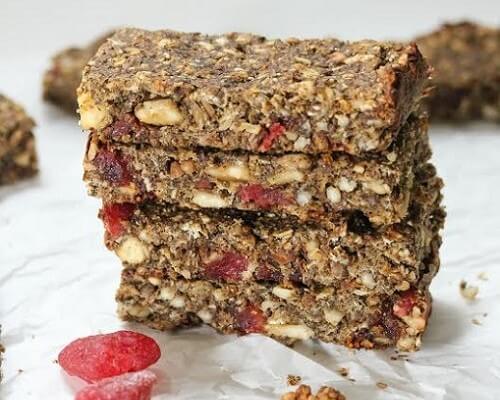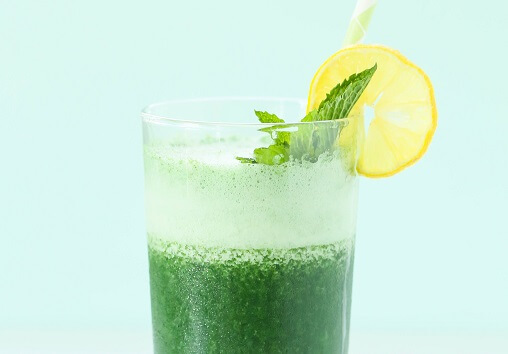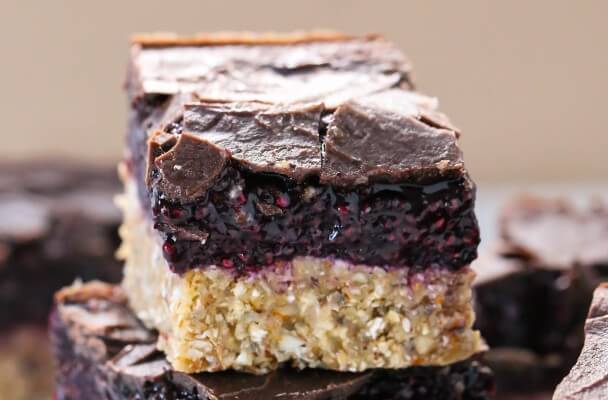Healthy Snacks for Fruit Lovers
The natural sugars in fruits can satisfy the cravings of your sweet tooth without negatively impacting your health; so it’s a great idea to always have healthy fruit snacks on hand to keep you satiated when the next snack attack hits. Though fresh fruit is a great choice, it’s not always the most practical option.
Benefits of Eating Fruit
Fruits form a core part of the food pyramid for a reason: they are full of beneficial nutrients that keep your body running optimally. In particular, eating plenty of fruit is a good way to get enough vitamin C and vitamin A. Consumption of fruit is associated with a lower risk of diabetes, cardiovascular disease, and other chronic health conditions (Datz, 2013).
More recently, certain fruits have gained attention for their roles as “superfoods.” Blueberries, cranberries, acai berries, and pomegranates contain beneficial phytonutrients that may ward off disease by protecting cells from oxidative damage (Dairy Council of California, n.d.). Eating fruits from across the color spectrum is a good way to ensure that you get the variety of vitamins, minerals, and phytochemicals you need.
Optimal Daily Fruit Intake
The United States Department of Agriculture, or USDA, (2016) has developed recommendations for your optimal daily fruit intake based on your age and sex. In general, men should aim to get at least 2 cups of fruit per day. Women aged 19 to 30 years should also try to eat at least 2 cups, while women older than 30 need 1 ½ cups per day.
So what, exactly, is a cup of fruit? It’s good to make a mental note of what a 1-cup serving of fruit looks like so that you know that you’re eating enough. The following portions are considered 1 cup of fruit:
- 1 small apple or half of a large apple
- 32 seedless grapes
- 8 large strawberries
- 3 medium plums
- 1 large orange
- 1 medium pear
- 1 large banana
- 1 cup of applesauce
Importantly, a half-cup of dried fruit is roughly equivalent to 1 cup serving of fresh fruit. This is because fruits shrink as they are dehydrated, losing water weight while retaining valuable nutrients. Thus, it takes less dried fruit to get the same quality nutrition as fresh fruits. Drinking 1 cup of fruit juice is also equivalent to a 1-cup serving of whole fruit. However, many commercial juices are high in added sugars, meaning it is important not to drink too much. Juicing your own fruits can be a good way to boost your daily intake (USDA, 2016).
Nutrients Found in Dried and Freeze-Dried Fruits
Sometimes, it can be a pain to pack whole fruits to eat while on the go. Dribbling juices and bruised fruit skins can make fresh fruits less appealing than other snacks. Fortunately, dried and freeze-dried fruits are excellent alternative snacks for fruit lovers.
During the drying or freeze drying process, excess water is extracted from fruits. However, the vitamins, minerals, and phytochemicals remain active. Additionally, dried fruits are a great source of dietary fiber. Getting enough fiber is important to facilitate digestive regularity and keep your body satiated after eating your healthy fruit snacks (Campbell, 2015).
Recipes for Fruit Fans
Searching for something a bit heartier than your standard apple slices? Prepare a palate pleasing plate that makes use of your favorite food group with these fruit-filled recipes from our Health Nut and Registered Dietitian.

Homemade Granola Bars Recipe {gluten-free}
Add familiar flavors to your favorite treats with this simple recipe for wholesome granola bars. Each bar is packed with nutritious goodies, including mulberries, strawberries and bananas!
Ingredients: Dried mulberries, dried strawberries, raw cashews, organic peanut butter, ripe bananas, raw sunflower seeds, hemp protein powder, gluten-free rolled oats, chia seeds, flaxseed meal.
Total Time: 40 minutes
| Yield: 12 bars

Spirulina Smoothie Recipe
Fruit lovers can always enjoy a good smoothie, so why not pack your blended beverage with a brilliant superfood to add to its offerings? This recipe utilizes spirulina to supply a superb source of nutrients to accommodate any diet!
Ingredients: Spirulina, banana, fresh spinach, apple juice, crushed ice, lemon juice.
Total Time: 2 minutes
| Yield: 2 smoothies

Blueberry Chia Jam Bars Recipe {gluten-free, vegan}
This delectable dessert utilizes a wholesome blend of blueberries and chia seeds to create a brilliant flavor capable of satisfying any sweet tooth.
Ingredients: Raw almonds, gluten-free rolled oats, chia seeds, maple syrup, water, vanilla or almond extract, blueberries, cacao powder, coconut oil.
Total Time: 30 minutes
| Yield: 16 mini bars
Healthy Eating
- Healthy Highlights
- 5 Uses for Cacao Powder
- 5 Ways to Eat Farro
- 6 Best Gluten-Free Foods
- Alcohol and the Body
- Almond Flour Recipes
- Anti-Aging Superfoods
- Beat the Afternoon Slump
- Benefits of a Plant-Based Diet
- Benefits of Baobab
- Benefits of Cashews
- Benefits of Coconut Oil for Hair
- Benefits of Coconuts
- Benefits of Dates
- Benefits of Fenugreek
- Benefits of Garcinia Cambogia
- Benefits of Goji Berries
- Benefits of Kale Chips
- Benefits of Monk Fruit Sweetener
- Benefits of Peanuts
- Benefits of Pecans
- Benefits of Pistachios
- Benefits of Pumpkin Seeds
- Benefits of Spelt Flour
- Benefits of Steel Cut Oats
- Benefits of Sunflower Seeds
- Benefits of Tiger Nuts
- Benefits of Turmeric
- Benefits of Walnuts
- Benefits of Wheatgrass
- Best Food Fads
- Cacao vs Cocoa
- Caffeine-Free Energy Foods
- Chocolate That's Good for You
- Diet vs. Exercise
- Fat Burning Foods
- Food Myths Debunked
- Foods for Bone Density
- Foods for Colon Health
- Foods for Healthy Hair
- Foods for Healthy Skin
- Foods to Help Sleep
- Foods to Reduce Stress
- Green Tea Benefits
- Healthy Baking Flours
- Heart Healthy Habits
- High Protein Health Risks
- How to Boost Your Metabolism
- How to Lose Weight While Aging
- How to Throw a Vegan BBQ
- Kaniwa vs Quinoa
- Little Health Foods
- Low-Carb: Fad or Friend?
- Making Healthier Desserts
- Mediterranean Diet Meal Plan
- Natural Beauty Products
- Nuts for Weight Loss
- Preparing Vegan Meals
- Preventing Muscle Degeneration
- Rare Superfoods
- Reduce Sugar Intake
- Save Time By Going Vegan
- Smarter Snack Swaps
- Smoothie Ingredients
- Soy Protein vs Whey Protein
- Starting a Plant-Based Diet
- Steel Cut vs Rolled Oats
- Sugar Substitutes
- Vegan Proteins
- Vegan Substitutions for Fall Recipes
- Why Go Vegan
- Healthy Meals
- Healthy Recipes
- Sports Nutrition
- Nutrition and Special Diets
- 21 Day Fix
- 5 Popular Diet Similarities
- Alkaline Diet
- Anti-Inflammatory Diet
- Calorie Counting
- Carb Cycling Diet
- Celiac Disease
- Cholesterol
- Clean Eating
- Crohn's Disease
- DASH Diet
- Detox Diet
- Diabetes
- Diabetes Diet
- Diet Pill Dangers
- Fat Burning Foods
- Gluten-free Diet
- Glycemic Index
- Heart Health
- High Blood Pressure Diet
- High Fiber Foods
- How to Eat Healthy
- How to Lower Blood Pressure
- Hypertension
- IBS Diet
- Ketogenic Diet
- Liquid Diet
- Low GI Foods
- Low-Carb Diet and Foods
- Low-Fat High-Carb Diet
- Mediterranean Diet
- Mediterranean Diet Foods
- Military Diet
- Nutrition Labels Explained
- Paleo Diet
- Raw Food Diet
- Superfoods
- Sustainable Weight Loss
- Thrive Diet
- Vegan Diet
- Vegetarian Diet
- Weight Loss Shakes
- Whole30
- Vitamins, Minerals & Nutrients

